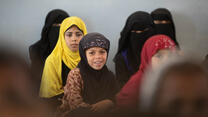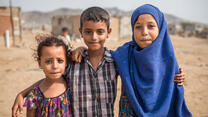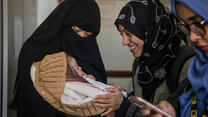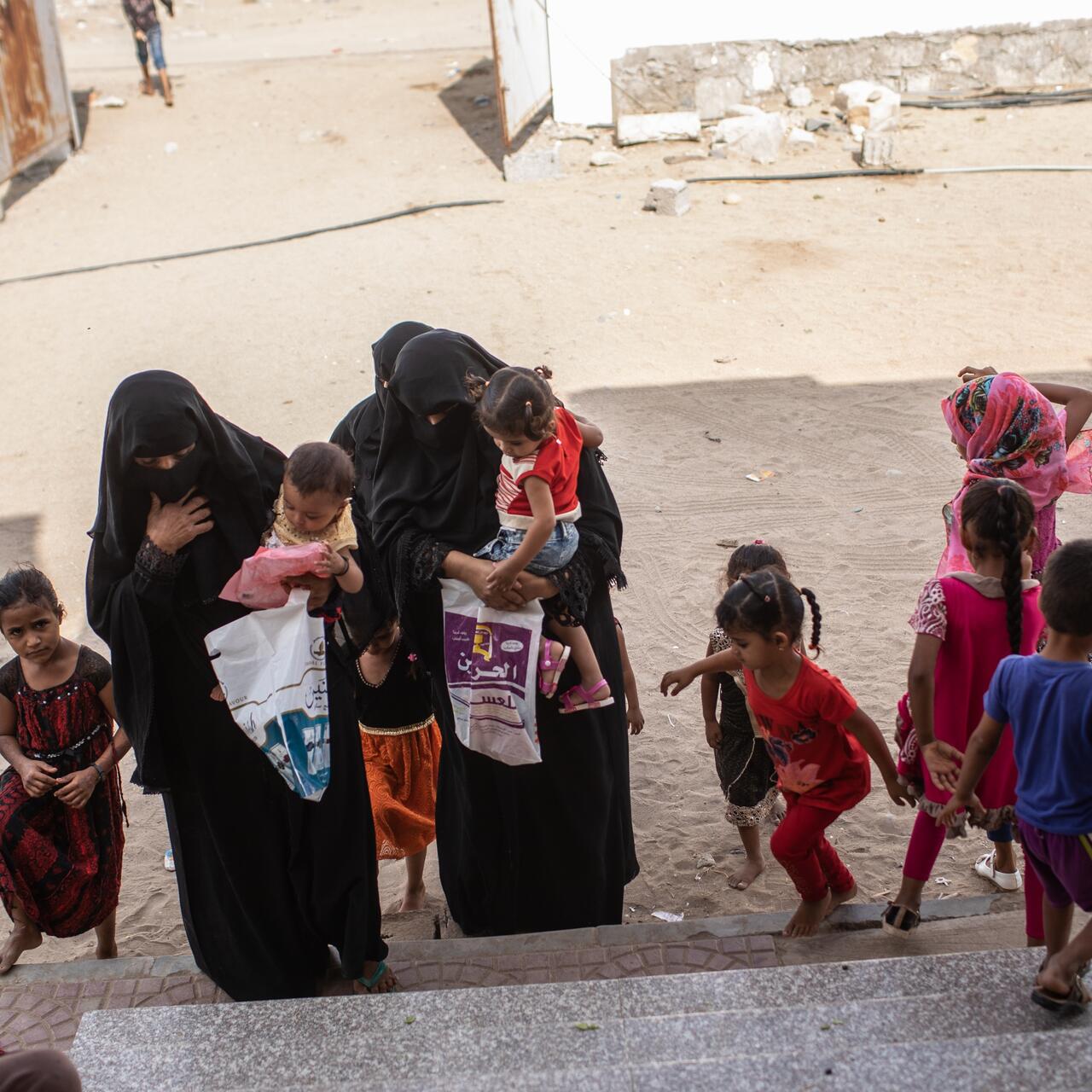
Nearly a half-decade of war in Yemen has killed some 100,000 people and turned the country into the world’s largest humanitarian crisis. The conflict has displaced 3 million people from their homes: 350,000 in 2019 alone.

Just one year ago, famine conditions were declared in parts of the country. Today, 80 percent of the population–24 million people–is in dire need of aid. Half of Yemenis are facing severe food shortages and living on the verge of famine.
New research by the International Rescue Committee (IRC) shows that if the war continues for another five years, it will cost $29 billion in humanitarian aid to hold vulnerable Yemenis back from the brink of catastrophe.
Four mothers in Yemen who have received medical and nutrition assistance from the IRC talk about how the crisis has impacted their families:
Adeeyah
We witnessed death. We used to escape the shelling by hiding in the roots of the trees, airstrikes above us and Houthis’ rockets in front of us... My children used to get up at night screaming in fear... We were frequently unable to cook food due to the danger of having open gas cylinders during bombardment. I used to dream of having my own house... the war destroyed our dreams and [our] future. Now I only dream of peace and safety.
Airstrikes and shelling have killed civilians at schools, markets and hospitals—even at funerals. But the most likely location for a Yemeni to be injured or killed at the end of 2018 was in their own home.
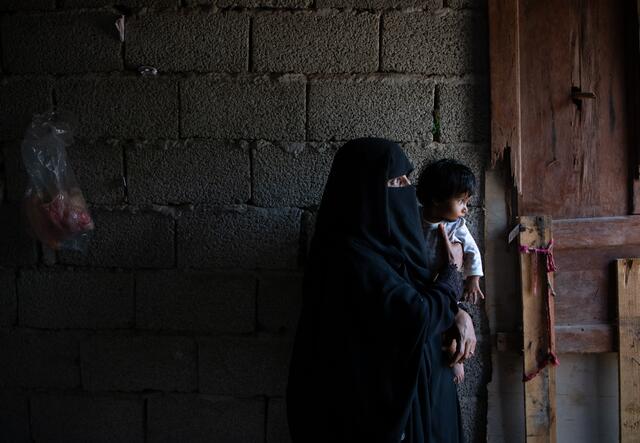
Haifaa
Price increases because of the war make it very difficult for me to secure basic [items] for my children... I realized my children were getting sick because they didn’t get enough food.
Yemen’s economic collapse and a drastic reduction in imports because of the war have resulted in rapidly rising prices for food and other essentials.
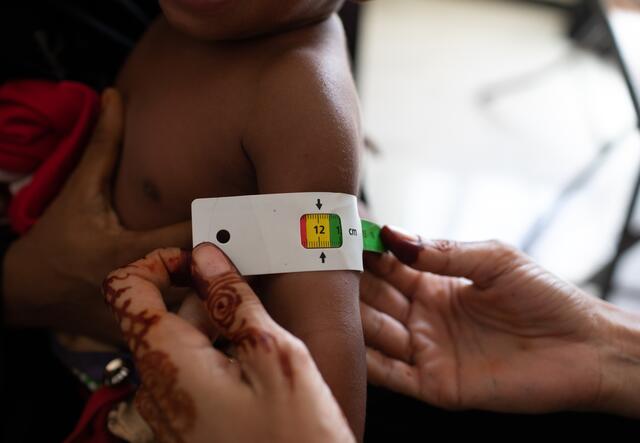
Fulla
We used to have different kinds of food and vegetables. On Fridays we used to have meat or chicken. But here we cannot afford meat or chicken—we only eat cooked lentils.
Flour, oil, red beans and onions – the most widely consumed foods in Yemen – have risen to over twice pre-war costs while salaries have stagnated, making food unaffordable for much of Yemeni society.
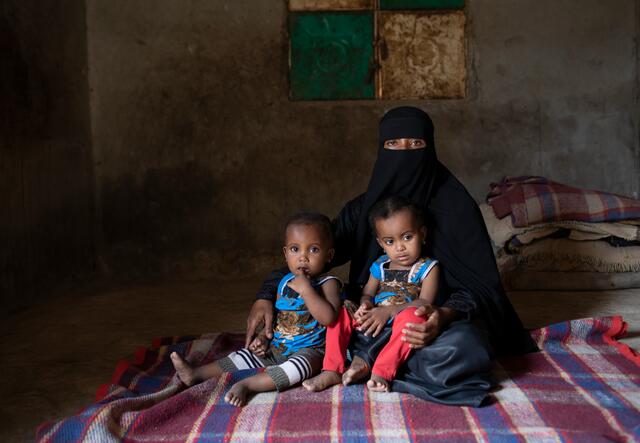
Nadia
The plane shelled close to us. We fled because we were afraid for our children ... Our life was miserable even before the war … We depend on livestock. I just sold a sheep to buy flour and sugar. I do not cook anything but bread and tea … My baby was close to death a few days ago. He had fever and seizure. I was holding him and crying to my mother.
The United Nations estimates 500,000 more Yemenis will die if fighting lasts until 2022, including 300,000 from hunger and/or lack of health care. The IRC operates a mobile clinic that reaches vulnerable families displaced by conflict like Nadia's who cannot afford to access medical services.
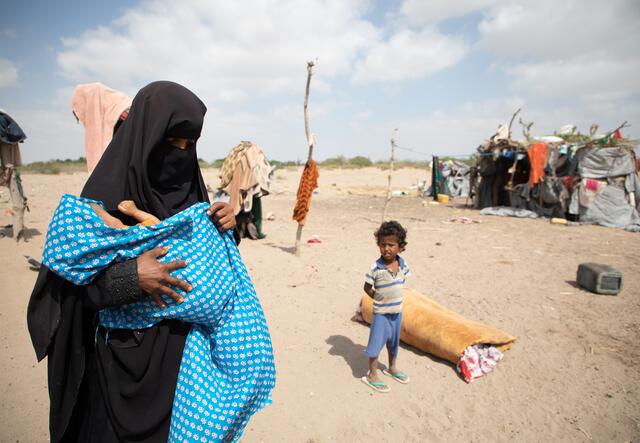
"The good news is that the huge efforts by humanitarian agencies, donor governments, and aid workers, have helped reduce slightly the appalling levels of child malnutrition in Yemen,” says IRC president and CEO David Miliband. “The bad news is that at this rate, it will take a further 20 years just to reach pre-war levels of child hunger.”
Aid saves lives, but only peace can save the country from famine. Recent developments in Yemen suggest a rare window of opportunity has opened to push for peace. Read the IRC’s recommendations for ending the crisis.
How the IRC helps
The IRC reaches more than 21,000 people in Yemen each week with health care and nutrition services, education for children, and programs to protect and empower women. Learn more about our lifesaving work.
